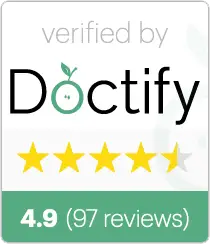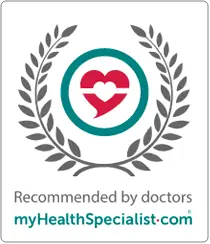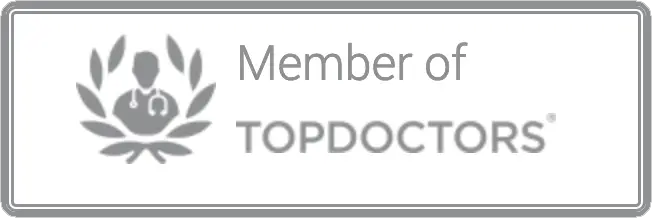Recovery after shoulder dislocation and shoulder dislocation surgery
WHAT IS A SHOULDER DISLOCATION?
A shoulder dislocation is when the ball of the arm bone (humeral head) pops out of the shoulder socket (glenoid). In some cases, the surrounding tissues supporting the shoulder joint may also be overstretched or torn.
The shoulder is one of the easiest joints to dislocate because the ball sits on a flat socket. This makes the arm extremely mobile and able to move in many directions, but also means it is not very stable.
HOW DOES A SHOULDER DISLOCATION HAPPEN?
You can dislocate your shoulder if you fall on to your arm heavily, but most people dislocate their shoulder while playing a contact sport, such as rugby, or in a sports-related accident such as skiing.
In older people, the cause is often falling on to outstretched hands – for example, after slipping on ice. Shoulder dislocations can happen more easily in people who are highly flexible, such as those with loose joints (joint hypermobility) this is called atruamatic instability. You can find out more about atraumatic instability here.
HOW ARE SHOULDER DISLOCATIONS TREATED?
If you think you have dislocated your shoulder, we would recommend attending the nearest Accident and Emergency (A&E) department. We don’t recommend trying to reduce a shoulder dislocation yourself as this may cause further damage.
You’ll be assessed and examined when you get to A&E. You will usually have an X-ray to check whether you’ve broken any bones and confirm the dislocation. If you do not have any fractures, your shoulder will be gently manipulated so the ball goes back onto the socket using a procedure known as reduction.
If you have a fracture along with a dislocation, you will need further scans to investigate the area in more detail. If you have a shoulder fracture-dislocation, contact us as soon as possible, as fractures with a shoulder dislocation require specialist orthopaedic care and possibly surgery.
WHAT IS A REDUCTION?
Reduction is usually carried out in A&E with a sedative. While you’re sitting or lying on the hospital trolley, the doctor will manipulate your arm with traction until it goes back in its socket. This may take a few minutes. You’ll usually have another X-ray to check your shoulder is in the correct position.
RECOVERING FROM A DISLOCATED SHOULDER REDUCTION
You can usually go home soon after your shoulder is put back in place, but you’ll need to rest your arm in a sling for a week while the pain settles. Evidence suggests that there is little additional benefit to wearing a sling for more than a week after a simple dislocation so you should discuss this with your doctor. You may need to return to hospital for follow-up care and may also be referred for physiotherapy to rehabilitate and strengthen your shoulder.
WHEN CAN I DRIVE AFTER SHOULDER DISLOCATION?
When considering safety to return to driving it is important to consider not only routine driving but the need to perform sudden emergency manoeuvrers such as emergency stops, and unexpected swerving out of the way of oncoming traffic or hazards. These need to be able to be done without hesitating. Other considerations around safety to return to driving include insurance cover and DVLA guidance. You should check your insurance policy to see if they place any restrictions on you returning to driving after injury.
Driving can resume once the affected arm is no longer in a sling and the shoulder muscles have recovered and there is no pain when moving the arm. For most people this would mean at least a week before they can try to drive after a simple dislocation. If you have questions about when you can drive after a shoulder dislocation do not hesitate to ask your doctor or physiotherapist for advice.
WHAT IS A SHOULDER STABILISATION?
During traumatic shoulder dislocations, structures stabilising the shoulder may be torn and, in some cases, particularly in younger patients, recurrent dislocations or instability symptoms (feeling like the shoulder wants to come out) can be a problem.
In cases of recurrent instability, patients may need to have surgery to stabilise the shoulder. Shoulder stabilisation surgery can either be done key-hole and referred to as an arthroscopic stabilisation, or open surgery usually in the case of bone loss to the socket. An open stabilisation or Latarjet procedure involves moving a bit of bone near the shoulder (coracoid) and its tendon attachments, and screwing it to the front of the socket so that it widens the socket.
You can find out more about surgery for traumatic shoulder dislocations here.
RECOVERING FROM SHOULDER DISLOCATION SURGERY
In order to give the shoulder time to heal, we recommend patients rest in a sling for 3 weeks and during that time shoulder movements are limited and guided by the physiotherapist.
About 3 weeks after surgery for shoulder instability, patients can begin extensive stretching exercises through a physical therapy program. Initially, therapy will focus on gentle motions to increase range of motion and flexibility. After about 6 weeks, more resistance exercises will be added to strengthen the joint and its surrounding muscles.
After 6 weeks of therapy and rehabilitation, the affected arm can typically be used fairly normally, with the exception of avoiding forceful movements above the head or across the body, contact, sports, and weight-bearing activities, such as heavy lifting or push-ups.
Those who have a sedentary office job can usually return to work 1 to 2 weeks after surgery as keyboard use is possible in a sling. More manual jobs that require heavy lifting, and contact sports may need to wait 6 months, depending on the patient’s specific job and rehabilitation plan.
You can see more information about post-surgery recovery, and our rehab protocols on our Shoulder Surgery Recovery page.
WHEN CAN I DRIVE AFTER SHOULDER DISLOCATION SURGERY?
Driving can resume once the affected arm is no longer in a sling and the shoulder muscles have recovered, realistically after 4 to 6 weeks. If you are unsure, please confirm this with your doctor.
Individuals who play sports should consult their physician about clearance to return to play. Activities such as golf or swimming may be approved after about 6 weeks, but high-impact sports that can affect the shoulder, such as rugby, football or volleyball, will require several months of rehabilitation before individuals can resume playing.
Full recovery for shoulder strength and activity may take up to a year, but most patients who follow their rehabilitation plan and protect the shoulder can anticipate a full return to pre-injury activity.
Nick Ferran @ Shoulder & Elbow London Ltd
Clinics in:
Chiswick – Harrow – St. Johns Wood
As an Amazon Associate, I earn from qualifying purchases.





